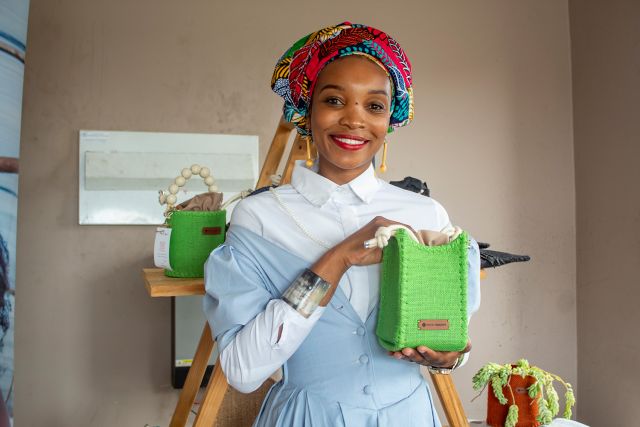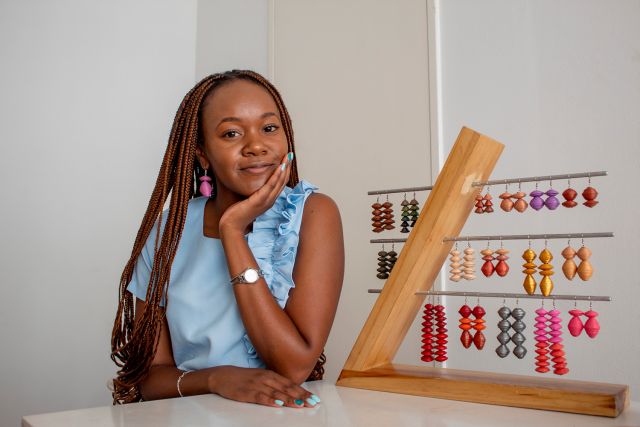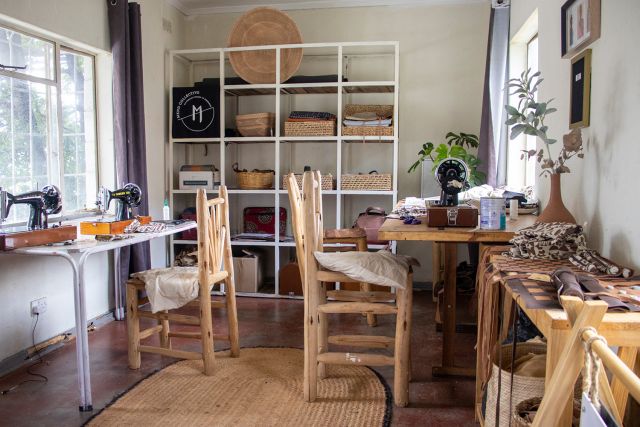This piece is a jewellery component made using reclaimed bone that has been shaped into a rounded oblong. The surface depicts a stylised geometric lizard. The detail is inscribed into the bone using traditional hand scrimshaw cross-hatching techniques, then dyed with black dye to accentuate the un-etched lizard design. The bone has been given an all-over-aged effect with natural tannins. This piece is a modern interpretation of ‚Äėhakata‚Äô, the traditional fortune-telling practice of throwing bones, used by Zimbabwean n‚Äôyanga (witchdoctors). The hakata set is typically four bones with different carved motifs. This component was recreated for use in jewellery making for the Ndau Collection.
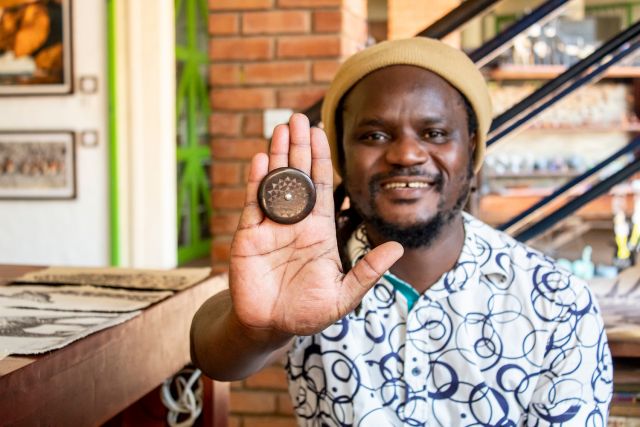
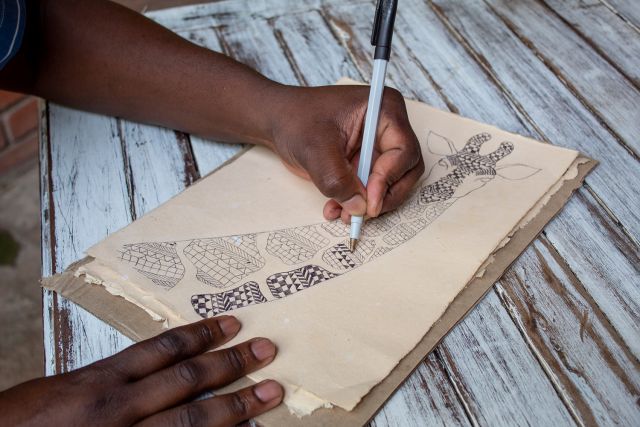
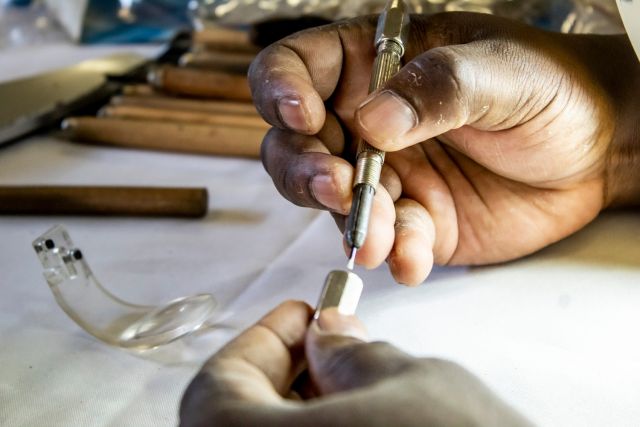
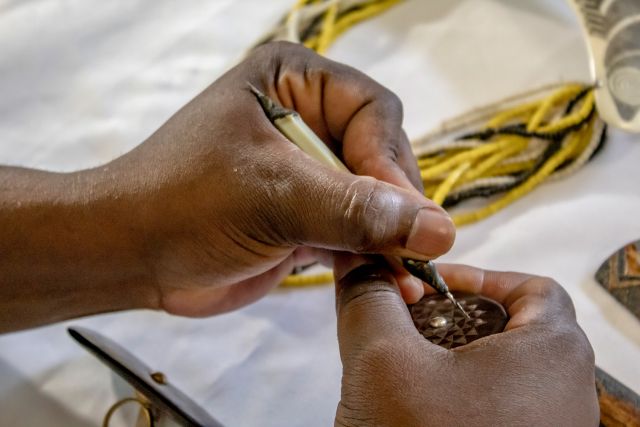
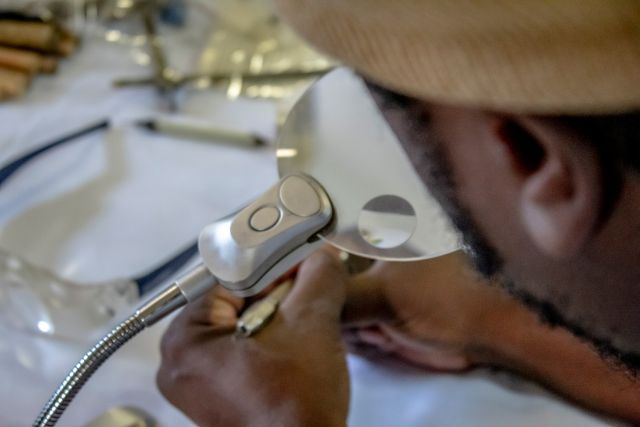
Moses Kalembela
- Engraver
- Victoria Falls, Zimbabwe
- Master Artisan
Elephants Walk Artists and Shopping Village, Adam Stander Drive 273, Victoria Falls, Zimbabwe
Monday to Friday 08:00 - 17:00
Scrimshaw and more to celebrate Zimbabwe
- ‚ÄĘ Moses is a multi-disciplinary artisan
- ‚ÄĘ His father is a renowned master woodcarver
- ‚ÄĘ He hosts workshops and lectures to share his craft
Moses Kalembela was born into a creative family. As a child, he would help his father with his work, learning the basics of carving and drawing. When he finished high school there was no question of ‚Äúnot following a craft-based career because I could not see myself doing anything else‚Ķ it has been organic in a way.‚ÄĚ Moses is largely self-taught, expanding his horizons by working with other artists, learning new skills, and being inspired by them. Drawing on his heritage, the first object Moses created was a scrimshaw design on an ostrich egg. Scrimshaw is not his only practice, he is skilled in a variety of other mediums including illustration. Moses set up his studio in 2006 and seeks to help put his country on the map of artistic craftsmanship.
Read the full interviewWorks
Photo: Wonai_Haruperi©Michelangelo_Foundation

Photo: Wonai_Haruperi©Michelangelo_Foundation
This piece is created from a circle of creamy beige cow horn, cut open to create a cuff and manipulated into a bracelet shape after heating and soaking in hot water then set to dry. The style is a recreation of a traditional Tonga bracelet. The outer surface features two lines of traditional linear stripes that have been etched in by hand using scrimshaw and then dyed with black dye to accentuate the resulting check pattern design.

Photo: Wonai_Haruperi©Michelangelo_Foundation
This rounded corner triangular-shaped pendant necklace is cut out of creamy bleached cow bone, then sanded smooth. Scrimshaw techniques are used to etch a walking elephant onto the surface, and then dyed black. The pendant is then strung on a black cotton thong.

Photo: Wonai_Haruperi©Michelangelo_Foundation
This ring features a circular disc of highly polished dark ironwood. The centre of the disc has been pierced through, then riveted onto a sterling silver band. The disc's surface is etched using scrimshaw techniques to create an expanding Mandala type pattern that radiates from the centre. The pattern is formed from triangular shapes, then dyed with washed white dye to make the design stand out.





